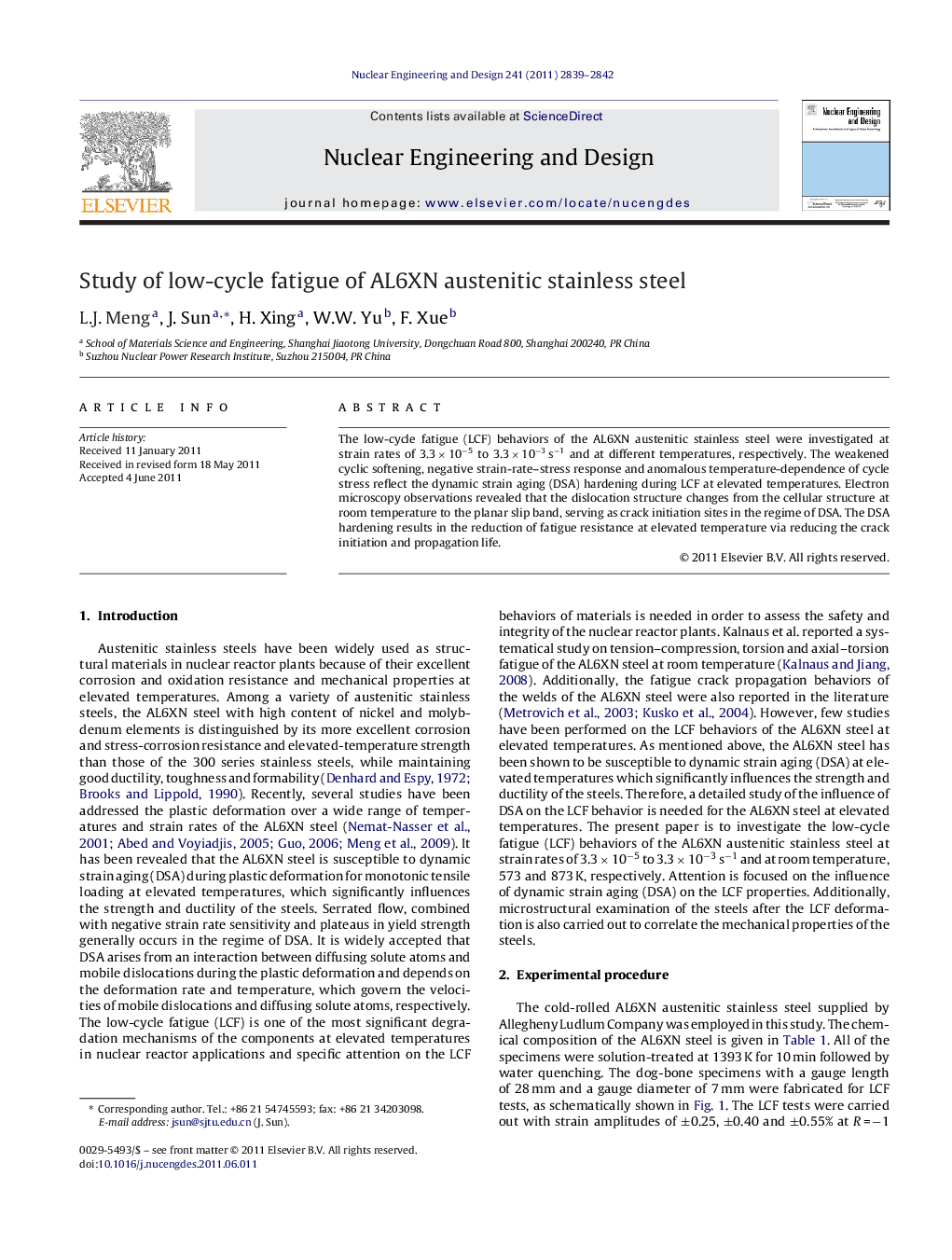| Article ID | Journal | Published Year | Pages | File Type |
|---|---|---|---|---|
| 297401 | Nuclear Engineering and Design | 2011 | 4 Pages |
The low-cycle fatigue (LCF) behaviors of the AL6XN austenitic stainless steel were investigated at strain rates of 3.3 × 10−5 to 3.3 × 10−3 s−1 and at different temperatures, respectively. The weakened cyclic softening, negative strain-rate–stress response and anomalous temperature-dependence of cycle stress reflect the dynamic strain aging (DSA) hardening during LCF at elevated temperatures. Electron microscopy observations revealed that the dislocation structure changes from the cellular structure at room temperature to the planar slip band, serving as crack initiation sites in the regime of DSA. The DSA hardening results in the reduction of fatigue resistance at elevated temperature via reducing the crack initiation and propagation life.
► The negative strain-rate–stress and anomalous temperature-dependence of stress occur during LCF. ► These together with weakened cyclic softening reflect DSA at elevated temperatures. ► The dislocation structure is planar in DSA rather than cellular at room temperature. ► The DSA hardening results in the reduction of fatigue resistance at elevated temperature.
